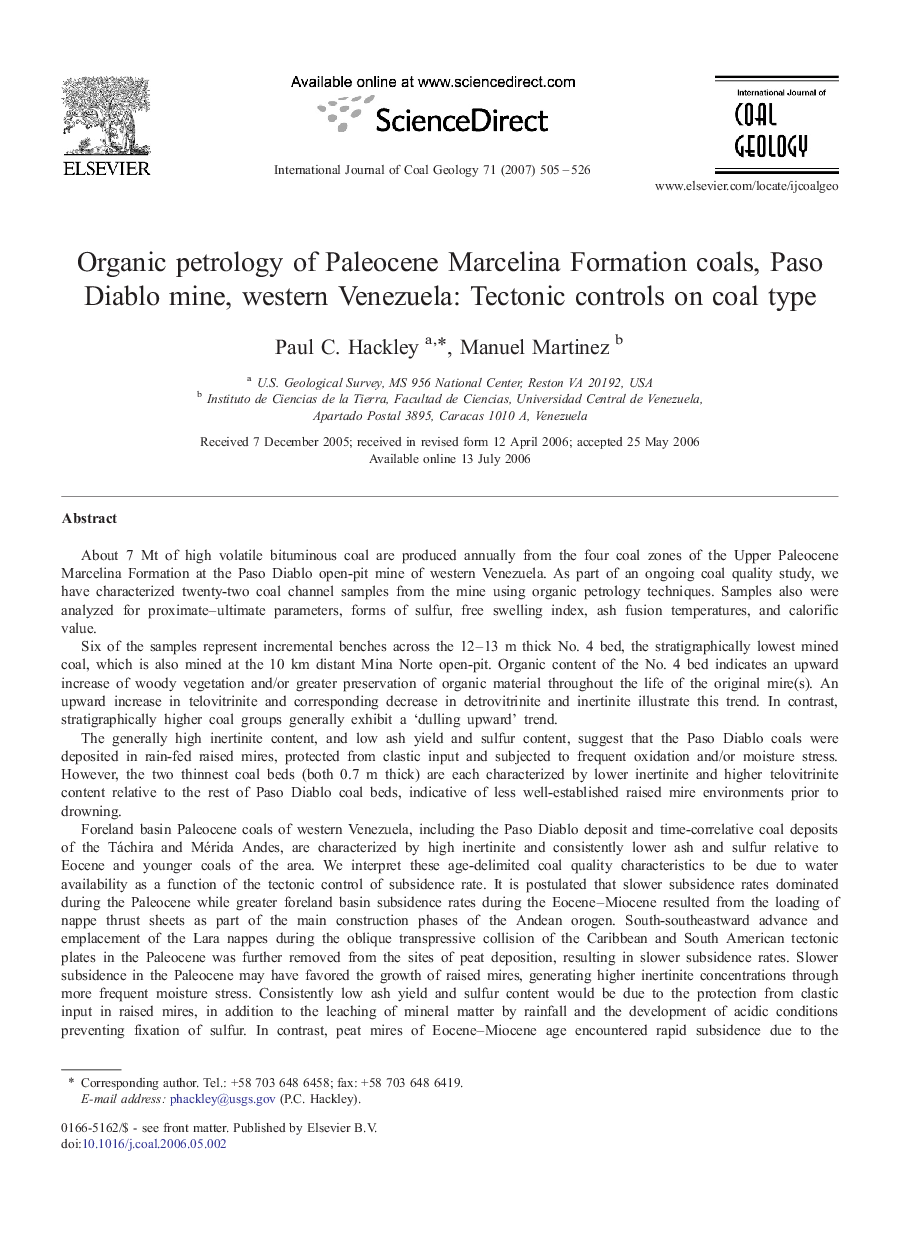| Article ID | Journal | Published Year | Pages | File Type |
|---|---|---|---|---|
| 1754193 | International Journal of Coal Geology | 2007 | 19 Pages |
Abstract
Foreland basin Paleocene coals of western Venezuela, including the Paso Diablo deposit and time-correlative coal deposits of the Táchira and Mérida Andes, are characterized by high inertinite and consistently lower ash and sulfur relative to Eocene and younger coals of the area. We interpret these age-delimited coal quality characteristics to be due to water availability as a function of the tectonic control of subsidence rate. It is postulated that slower subsidence rates dominated during the Paleocene while greater foreland basin subsidence rates during the Eocene-Miocene resulted from the loading of nappe thrust sheets as part of the main construction phases of the Andean orogen. South-southeastward advance and emplacement of the Lara nappes during the oblique transpressive collision of the Caribbean and South American tectonic plates in the Paleocene was further removed from the sites of peat deposition, resulting in slower subsidence rates. Slower subsidence in the Paleocene may have favored the growth of raised mires, generating higher inertinite concentrations through more frequent moisture stress. Consistently low ash yield and sulfur content would be due to the protection from clastic input in raised mires, in addition to the leaching of mineral matter by rainfall and the development of acidic conditions preventing fixation of sulfur. In contrast, peat mires of Eocene-Miocene age encountered rapid subsidence due to the proximity of nappe emplacement, resulting in lower inertinite content, higher and more variable sulfur content, and higher ash yield.
Related Topics
Physical Sciences and Engineering
Earth and Planetary Sciences
Economic Geology
Authors
Paul C. Hackley, Manuel Martinez,
